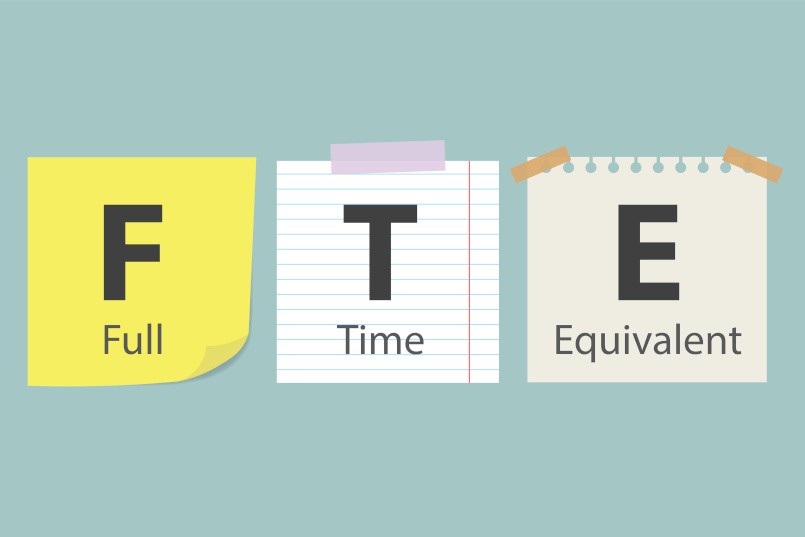Average cost per FTE is a very common procurement measure for assessing agency costs. It is basically the equivalent number of full-time staff divided into the total cost of retaining those staff. The fundamental flaw of this approach is it provides no measure of quality and takes no consideration of the mix of expertise.
The average cost per FTE would be great if you were hiring a homogeneous workforce if such a thing exists. But once you get beyond the effective cost per person measure, there is a need to consider more insightful measures of cost against quality, which effectively is value.
In fact, the use of average cost per FTE is encouraging agencies potentially to under-resource your business with more junior staff, with titles that are not necessarily reflective of their experience and capabilities.
Average Cost Per FTE
Let’s look at how this is calculated and what information it actually provides in assessing value.
Table A:
| Agency A | Agency B | Agency C |
| 14.2 FTEs | 11.4 FTEs | 8.5 FTEs |
| Fee $1,372,000 | Fee $1,348,000 | Fee $1,298,000 |
| Ave $/FTE $96,620 | Ave $/FTE $118,246 | Ave $/FTE $152,706 |
Please note the numbers used here are for illustration only and should not be taken as being representative of any market, advertiser or agency fee.
Three agency proposals have been provided in an RFT with the following information. Which one represents the better value? It appears Agency A is offering more people at a lower cost, while Agency C is offering 40% fewer people for a similar price.
Therefore, you would choose Agency A.
Average Salary Cost Per FTE
But let’s go one step further to see the underlying average salary costs per FTE. For this, we need to know the effective profit and overhead multiple used by the agency.
Table B:
| Agency A | Agency B | Agency C |
| 14.2 FTEs | 11.4 FTEs | 8.5 FTEs |
| Fee $1,372,000 | Fee $1,348,000 | Fee $1,298,000 |
| Ave $/FTE $96,620 | Ave $/FTE $118,246 | Ave $/FTE $152,706 |
| Profit and overhead multiple 2.2 | Profit and overhead multiple 2.3 | Profit and overhead multiple 2.1 |
| Average salary cost $44,000 pa | Average salary cost $51,411 pa | Average salary cost $72,717 pa |
Please note the numbers used here are for illustration only and should not be taken as being representative of any market, advertiser or agency fee.
So, this aligns with the average cost per FTE, except now we have a more relatable figure being the average salary. Remember the average is the total cost of salaries paid divided by the equivalent number of full-time people paid. In this case, Agency A appears to be paying on average close to an entry-level salary for the market. While Agency C is paying an average that would be considered for five years’ experience.
The issue is we do not have any insight into the experience and capabilities of these people. Let’s look at that.
Mix of experience by FTE
Beyond total FTEs, you need to go into the actual mix and experience levels of the resources. This allows you to calculate a weighted average based on the experience of the team.
Table C
| Agency A | Agency B | Agency C |
| 14.2 FTEs | 11.4 FTEs | 8.5 FTEs |
| Fee $1,372,000 | Fee $1,348,000 | Fee $1,298,000 |
| Management 0% | Management 5% | Management 10% |
| Senior 10% | Senior 20% | Senior 30% |
| Midlevel 20% | Midlevel 30% | Midlevel 50% |
| Junior 70% | Junior 45% | Junior 10% |
| Weighted cost per FTE $138,028 | Weighted cost per FTE $109,996 | Weighted cost per FTE $105,314 |
Please note the numbers used here are for illustration only and should not be taken as being representative of any market, advertiser or agency fee.
Weighting the FTE resources based on seniority provides a better view of the value, rather than using an average. In this case, while Agency C has fewer FTEs, it has a significantly higher level of experienced resources, while Agency A is over-represented by junior resources.
One of the challenges with this approach is classifying management, senior, mid-level and junior. Titles are one way, but increasingly titles can be misleading. A better way is to look at years of industry experience from a source such as LinkedIn profiles, with the following rule of thumb: up to 5 years is Junior, five to ten years is Mid-level, ten years plus is Senior or Management.
An interesting note here is Agency A, with no management resource in the retainer. This is often because the management team is covered by the overhead and is built into the overhead and profit multiple. In this case Agency A is 10% higher than Agency C.
Which agency offers the best value?
If you were buying on price, Agency A offers the best value, with 14.2 FTEs at $96,620 per FTE. But you would have a significant number of junior staff working on your business with an average salary of $44,000 per year.
This would be ideal for a high-volume client with low strategic requirements or low complexity issues in their category. A high-volume, low-cost retailer would be typical of this profile. But often we see this resourcing strategy used by agencies for clients that really need more experienced staff on their business, but the agency is trying to win the business by using this approach to appear lower in cost.
Agency B would be the ideal mix of resources for those clients with a medium volume of work, who require a balance between getting the job done and having the expertise and experience to oversee the work and manage any issues that arise both from a strategic and business perspective.
Agency C would be particularly good value for those clients that require expertise and experience to address strategic and business challenges. But it would require having only a moderate to low volume of work going through the agency as there may be too few resources physically to handle the workflow.
Once you move beyond a simple evaluation of cost per unit or cost per FTE in the case of agency people retained, you can evaluate the agency based on the strategic and business requirements of marketing and not simply the lowest cost. And isn’t that a better approach to determining agency value?
TrinityP3’s Agency Remuneration Agency Remuneration and Negotiation service ensures that the way in which you pay your agency is optimal. Read more here




